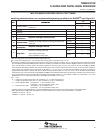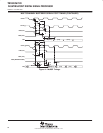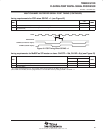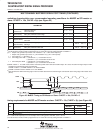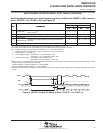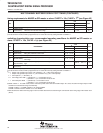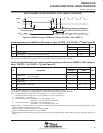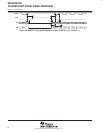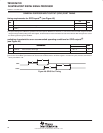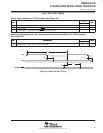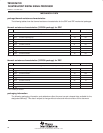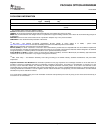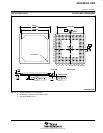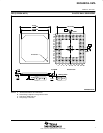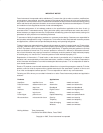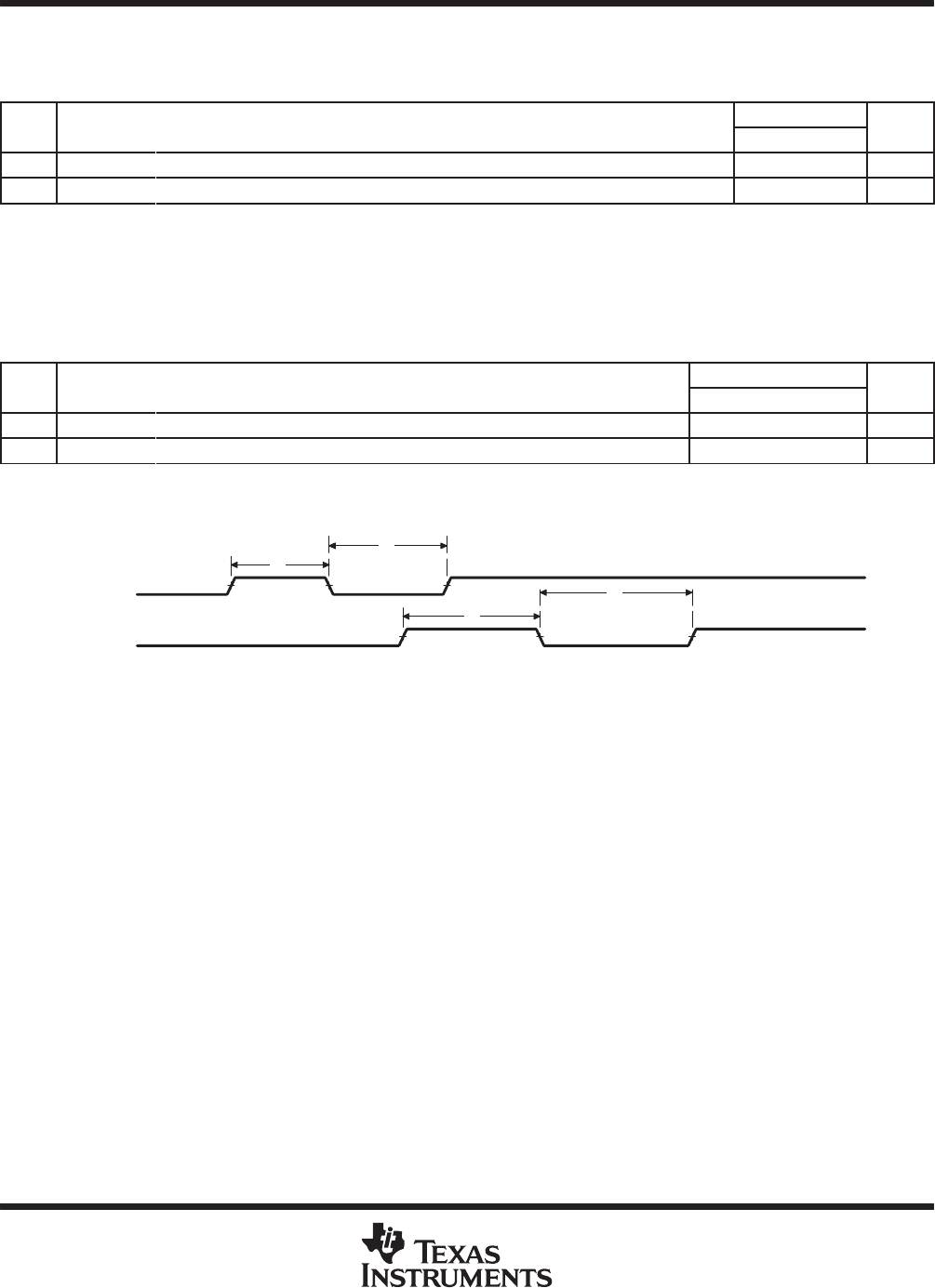
TMS320C6712D
FLOATINGĆPOINT DIGITAL SIGNAL PROCESSOR
SPRS293 − OCTOBER 2005
96
POST OFFICE BOX 1443 • HOUSTON, TEXAS 77251−1443
GENERAL-PURPOSE INPUT/OUTPUT (GPIO) PORT TIMING
timing requirements for GPIO inputs
†‡
(see Figure 48)
NO.
−150
UNIT
NO.
MIN MAX
UNIT
1 t
w(GPIH)
Pulse duration, GPIx high 4P ns
2 t
w(GPIL)
Pulse duration, GPIx low 4P ns
†
P = 1/CPU clock frequency in ns. For example, when running parts at 150 MHz, use P = 6.7 ns.
‡
The pulse width given is sufficient to generate a CPU interrupt or an EDMA event. However, if a user wants to have the DSP recognize the GPIx
changes through software polling of the GPIO register, the GPIx duration must be extended to at least 24P to allow the DSP enough time to access
the GPIO register through the CFGBUS.
switching characteristics over recommended operating conditions for GPIO outputs
†§
(see Figure 48)
NO.
PARAMETER
−150
UNIT
NO.
PARAMETER
MIN MAX
UNIT
3 t
w(GPOH)
Pulse duration, GPOx high 12P − 3 ns
4 t
w(GPOL)
Pulse duration, GPOx low 12P − 3 ns
†
P = 1/CPU clock frequency in ns. For example, when running parts at 150 MHz, use P = 6.7 ns.
§
The number of CFGBUS cycles between two back-to-back CFGBUS writes to the GPIO register is 12 SYSCLK1 cycles; therefore, the minimum
GPOx pulse width is 12P.
GPIx
GPOx
4
3
2
1
Figure 48. GPIO Port Timing



